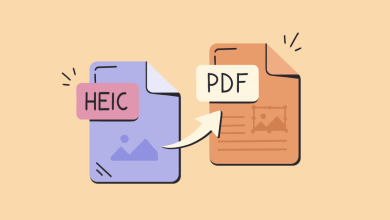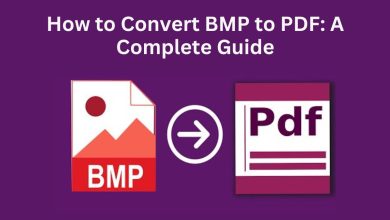
IT departments were early adopters, but project management software is now a must-have tool in all fields. As the complexity of initiatives grows, so does the need for collaboration and interdependence among internal departments within a company. Coordination and smooth handoffs of a project’s moving parts are also required between organizations and their vendors.
Whether a company is creating a cutting-edge website or constructing a new facility, the project’s many moving parts must all work together. Project management tools allow you to assign tasks, track progress, set goals and timelines, and communicate across teams all in one place. While most applications have some basic features and functionalities in common, these can vary greatly between solutions.
Knowing what your company requires from a project management tool is the first step toward selecting the best one. Other factors and scenarios, however, may influence your decision. This article explains how to choose the best project management solution for your team.
Prioritize Your Aches and Pains
If there were no underlying pain points, your company would not be looking for a project management solution. Employees, for example, may suggest that meetings be more structured and that action item be held more accountable. Perhaps communication between employees and departments isn’t as fluid as it should be. Assignments are being dropped, and some team members appear to be picking up the slack more than others.
Make a list of the challenges you face while completing a project to help you narrow down what you need from an app. You can then prioritize your list by matching these requirements with the features of a project management tool. Assume you discover that uneven workloads and poor coordination are the root causes of missed deadlines. Customized views and automated assignment handoffs will then rise to the top of your list.
As you match an app’s functionalities to your pain points, ask stakeholders if they believe those features are actual solutions. A tool, for example, may have an appealing interface but fail to provide a useful overview of a project’s timeline or progress. If keeping track of where everyone is with their tasks is difficult, activity logs and automated status updates will be more useful.
Establish the Scope of Use
A small company with five employees may not need to share project information with outside vendors. A medium-sized or large enterprise, on the other hand, may want to exchange data, share project timelines, and coordinate tasks with third parties. Without a standardized tool, deadlines and other critical information may easily slip through the cracks.
Some project management solutions are installed locally, while others are hosted in the cloud. Local applications can be useful for organizations that do not need to share project data with third-party vendors. Internal teams will be able to access project information using such apps as long as they are using company-issued devices on your network. If in-house teams are the only hands-on-deck for the time being and in the foreseeable future, this may be the best solution.
However, if remote employees or third parties require access outside of your network, cloud-based solutions will be more scalable and practical. You can still control who has access to and edits the data, sometimes more effectively than with local apps. You’ll also be laying the groundwork for future team expansion and collaboration with independent contractors and remote workers.
Consider Potential Learning Curves
Investing in a scalable project management app with features to address your pain points is one thing. However, getting your team to use the tool you’ve provided is a completely different story. Buying a difficult-to-understand project management solution is sometimes worse than not getting one at all.
Allow employees to try out the tools on your shortlist during the selection and evaluation process. Many project management app developers provide free trials or demos so that you can try them out. Allow the team to test the interface and features with a dummy project. Load an actual project into the tool and see how well it works if the demo or trial period is long enough.
Gather feedback from the team to combine with your own observations at the end of the trial phase. Inquire whether the tool’s features and functionalities performed well. Was the interface simple to use and comprehend? Check to see if the features truly address the issues you’ve identified. List any gaps or difficulties that arose during the trial, and determine whether the team believes that additional training is required.
Take into account Integration and Workflow Capabilities
Project management tools are rarely limited to stand-alone or self-contained functionality. Many of these apps can work in tandem with other software that your company may be using. For example, a tool may have an API that works with your customer relationship management or instant messaging software. Integration capabilities such as these can synchronize your team’s efforts across multiple apps, saving them the trouble of switching between them.
Your employees will value a tool that complements their current workflow methods and processes. A software development team, for example, that is accustomed to working in sprints requires assignment capabilities that break down larger tasks into subtasks. Similarly, a group that prefers visual cues for planning will require capabilities that simulate Kanban boards or Gantt charts.
Because introducing a new app requires employees to shift gears, integration and workflow capabilities that support existing processes can help to reduce resistance. As a result, the team will find it easier to adapt to the tool and reap its benefits. And leadership won’t have to fight as hard to persuade the troops that using a project management tool is necessary.
Choosing the Best Tool
Because there are so many options, selecting the best project management software for your company can be difficult. It’s difficult to know where to start and it’s easy to become distracted by a laundry list of promises and functionality claims. As a result, it’s best, to begin with, an internal list based on the obstacles your team encounters. Determine which pain points are the most problematic, whether it’s an unclear definition of roles or difficulty knowing where assignments are at.
Once you’ve determined why your company requires a project management tool, you can start looking for the best one. Matching available features to your “why” is a good place to start, but you must also consider who will use the tool. Then, evaluating ease of use and fit will narrow down your shortlist to the winning candidate.
Finally, your company will have the solution it requires to significantly improve project execution.
Learn more from business and read 5 Best Collaboration Tools for Remote Workers.





2 Comments